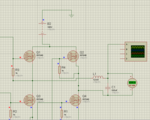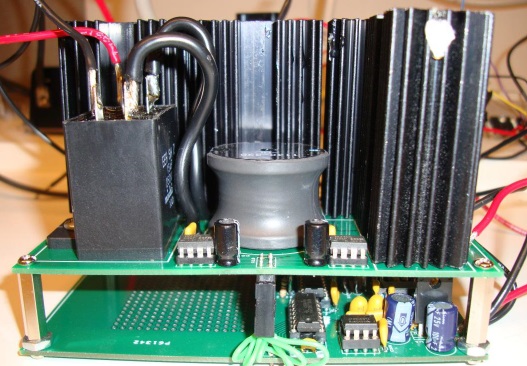Kryptone
Member level 3

I am designing a SMPS inverter I need 110VAC , 50Hz output with 12V input from power supply. I built my dc-dc converter using a ETD34 ferrite core with windings 3 + 3 turns on the primary and about 80 turns on the secondary in order to get 180 Vdc after feedback.
The dc-dc converter worked and now I am on to the SPWM section where I am using the ATmega16 to generate the SPWM signals . When I simulate the code in Proteus it works giving me my 50 Hz fundamental frequency and 16kHz switching frequency but when I connect the pins of the MCU to the full bridge inverter I can see the switching of the MOSFETs but I get zero voltage at the outputs but when I connect the AC voltmeter in Proteus across the LC filter to ground I get about 60 VAC which decreases after a while from the 180 VDC dc rail of the full bridge inverter. WHat could be wrong?
From the snipped image of the circuit shows that Q1 and Q3 turn on while Q2 and Q4 are off for 8ms and then vice-versa

Please I need help!!!!!!!!!!
The dc-dc converter worked and now I am on to the SPWM section where I am using the ATmega16 to generate the SPWM signals . When I simulate the code in Proteus it works giving me my 50 Hz fundamental frequency and 16kHz switching frequency but when I connect the pins of the MCU to the full bridge inverter I can see the switching of the MOSFETs but I get zero voltage at the outputs but when I connect the AC voltmeter in Proteus across the LC filter to ground I get about 60 VAC which decreases after a while from the 180 VDC dc rail of the full bridge inverter. WHat could be wrong?
From the snipped image of the circuit shows that Q1 and Q3 turn on while Q2 and Q4 are off for 8ms and then vice-versa

Please I need help!!!!!!!!!!




